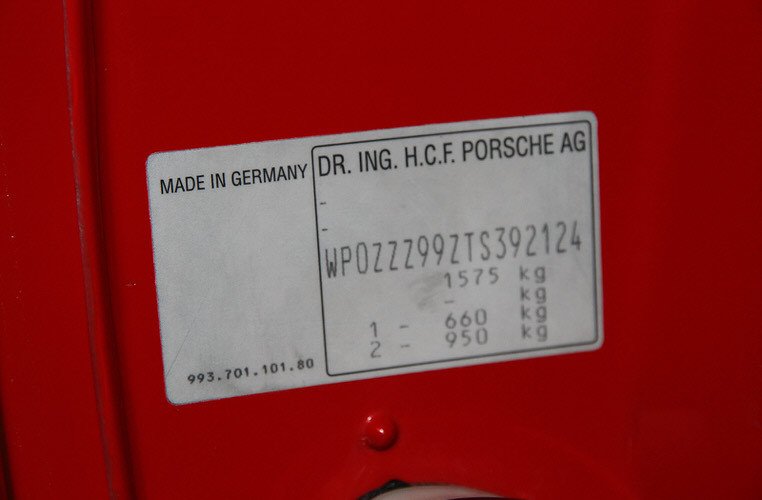Vehicle Code 10752 VC is the California statute that makes it a crime for a person to:
- sell a vehicle identification number (VIN), or
- possess a stolen or fraudulent VIN.
Examples of illegal acts under this statute are:
- Phil helps a car lot that deals in stolen vehicles by selling it vehicle identification numbers that he has taken from other cars.
- Kelly makes and then possesses a counterfeit VIN with the goal of placing it on her ex-boyfriend’s car to try and get him in trouble.
- Marco sells his own car’s identification number to a neighbor to help her conceal a stolen vehicle.
Defenses
Luckily, there are several legal defenses that a person can raise if accused of a crime under Vehicle Code 10752. These include showing that an accused party:
- acted without a bad intent;
- was entrapped; and/or,
- was arrested after a coerced confession.
Penalties
A violation of VC 10752 is a wobbler offense under California law. This means it can be charged as either a misdemeanor or a felony.
If charged as a misdemeanor, the crime is punishable by:
- imprisonment in the county jail for up to one year; and/or,
- a fine of not less than $250.
If charged as a felony, the offense is punishable by:
- imprisonment in the county jail for up to three years; and/or,
- a maximum fine of $5,000.
Our California criminal defense attorneys will highlight the following in this article:
- 1. What is the illegal possession/sale of a VIN?
- 2. Are there legal defenses if accused under VC 10752?
- 3. Penalties, punishment, and sentencing
- 4. Related offenses

California Vehicle Code 10752 VC is the California statute that makes it a crime for a person to sell a vehicle identification number (VIN), or possess a stolen or fraudulent VIN.
1. What is the illegal possession/sale of a VIN?
California Vehicle Code 10752 states:
“No person shall, with intent to prejudice, damage, injure, or defraud, acquire, possess, sell, or offer for sale any genuine or counterfeit manufacturer’s serial or identification number from or for, or purporting to be from or for, a vehicle or component part thereof.”1
Given this language, a prosecutor must prove two elements to convict a defendant under VC 10752 successfully. These are:
- the defendant sold or possessed a real or counterfeit VIN; and,
- he did so with the intent to prejudice, damage, injure, or defraud another party.2
Please note that this code section uses the word, “intent.” This means a defendant is guilty under VC 10752 only if he acted with the specific purpose of prejudicing, damaging, injuring, or defrauding another party.
2. Are there legal defenses if accused under VC 10752?
A person accused of possession of a stolen VIN can challenge the accusation by raising a legal defense. A good defense can often get a charge reduced or even dismissed. Please note, though, that it is critical for an accused to hire an experienced criminal defense attorney to get the most effective defense.
Three common defenses to VC 10752 accusations are:
- no bad intent;
- entrapment; and/or,
- coerced confession.
2.1. No bad intent
Recall that a person must act with the intent to:
- prejudice,
- damage,
- injure, or
- defraud
another party in order to be found guilty under VC 10752. A strong defense, therefore, is for an accused to show that he did not act with this requisite intent. For example, maybe a defendant possessed a counterfeit VIN, not because he wanted to injure another person, but because he wanted to pull a funny prank on a friend.
2.2. Entrapment
In many VC 10752 cases, suspects are often arrested and accused after an undercover officer buys or obtains a vehicle identification number. Any later charges brought under the code section, though, must get dropped if the officer lured a suspect into committing the crime.
This “luring” is known as entrapment. It applies to overbearing official conduct on the part of police officers, like pressure, harassment, fraud, flattery, or threats. Entrapment is an acceptable legal defense provided that the accused shows he only committed the crime because of the entrapment.
2.3. Coerced confession
This defense applies to the situation where a defendant was charged under Vehicle Code 10752 following a confession.
California law states that police may not use overbearing measures to coerce a confession.
If a party can show that the police coerced him into a confession, then:
- the judge may exclude the confession from evidence; or,
- the case could get dropped altogether if the party got pressured into confessing to a crime he didn’t commit.

3. Penalties, punishment, and sentencing
A violation of VC 10752 is a wobbler offense under California law. This means it can be charged as either a misdemeanor or a felony depending on:
- the facts of the case; and/or,
- the criminal history of the defendant.
If charged as a misdemeanor, the crime is punishable by:
- imprisonment in the county jail for up to one year; and/or,
- a fine of not less than $250.3
In lieu of imprisonment, a judge has the discretion to impose misdemeanor probation, or “summary” or “informal” probation.
If charged as a felony, the offense is punishable by:
- imprisonment in the county jail for up to three years; and/or,
- a maximum fine of $5,000.4
In lieu of imprisonment, a judge has the discretion to impose felony, or formal, probation.
4. Related offenses
There are three crimes related to violations of Vehicle Code 10752. These are:
- operating a chop shop – VC 10801;
- tampering with a VIN – VC 10802; and,
- altering or changing a vehicle identification number – VC 10750.
4.1. Operating a chop shop – VC 10801
California Vehicle Code 10801 VC makes it a crime to knowingly own or operate a “chop shop.”
A “chop shop” is any place where someone knowingly:
- alters, takes apart, or stores a stolen motor vehicle or vehicle part; and,
- does so for the purpose of selling or disposing of it, or hiding its identity.5
A violation of VC 10801 is treated as a wobbler offense, meaning it can be charged as either a misdemeanor or a felony.
If charged as a misdemeanor, the offense is punishable by:
- imprisonment for up to one year in county jail, and/or
- a fine of up to $1,000.6
If charged as a felony, the crime is punishable by:
- imprisonment for up to four years in county jail, and/or
- a fine of up to $50,000.7
4.2. Tampering with a VIN – VC 10802
A person is guilty under VC 10802 if he tampers with a VIN in order to:
- misrepresent or hide the identity of the vehicle or the part,
- for the purpose of selling or transferring it.8
Vehicle Code 10802 VC is a California “wobbler” offense. A “wobbler” is a crime that can be charged as either a felony or a misdemeanor.
If charged as a California misdemeanor, VC 10802 carries a penalty of:
- up to one year in county jail, and/or
- a fine of up to $1,000.9
If charged as a California felony, however, the penalty is:
- 16 months, or two or three years in county jail, and/or
- a fine of up to $25,000.10
4.3. Altering or changing a vehicle identification number – VC 10750
Please note that a defendant is only guilty under this code section if he acts with the specific purpose to alter, destroy, or change a VIN.
Please also note that VC 10750 does not apply to:
- owners of a vehicle that attempt to refurbish or restore the auto’s VIN, or
- manufacturers when they place a new number on a new vehicle or its parts.11
The crime of destroying, defacing, or changing a VIN is charged as a California misdemeanor. As such, it is punishable by:
- up to one year in county jail; and/or,
- a fine of up to $1,000.12
Legal References:
- California Vehicle Code 10752 VC.
- See same.
- See same.
- See same. See also California Penal Code 1170(h).
- California Judicial Council Criminal Jury Instructions (CALCRIM) 1752.
- California Vehicle Code 10801 VC.
- See same.
- California Vehicle Code 10802 VC.
- See same.
- See same.
- California Vehicle Code 10750(b) VC.
- California Penal Code 19 PC.
